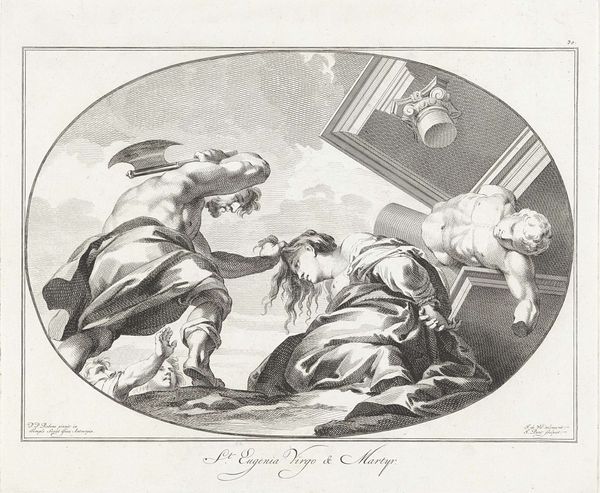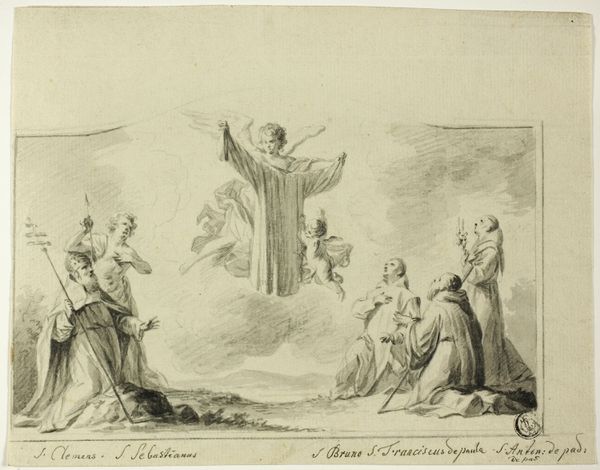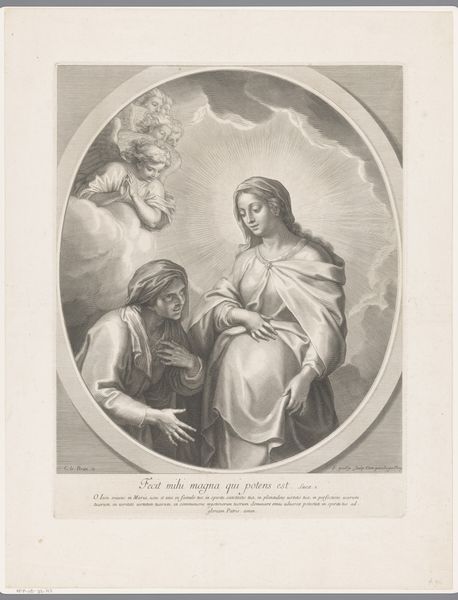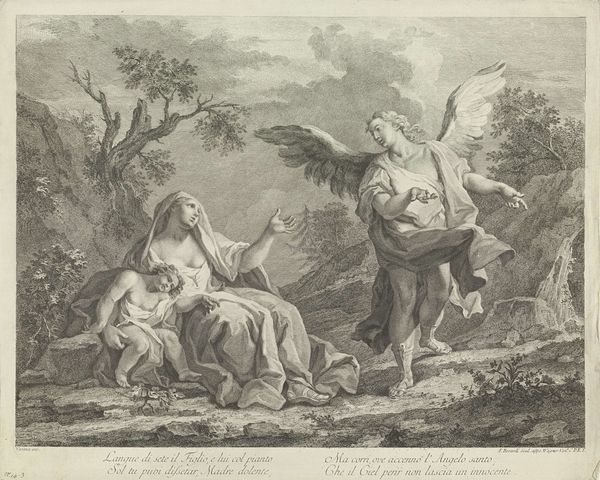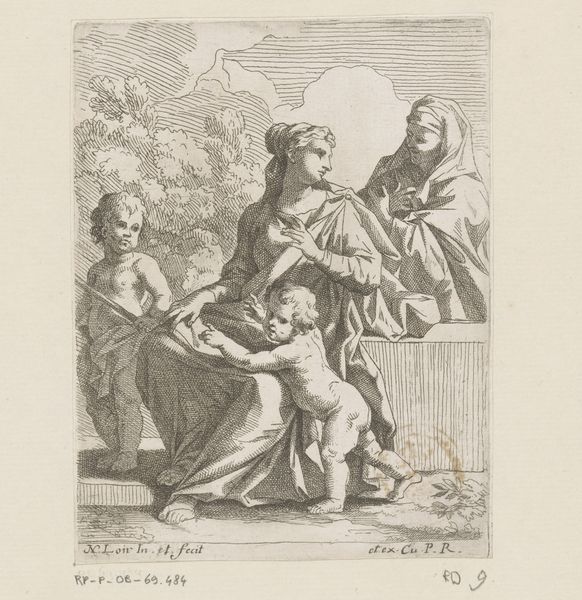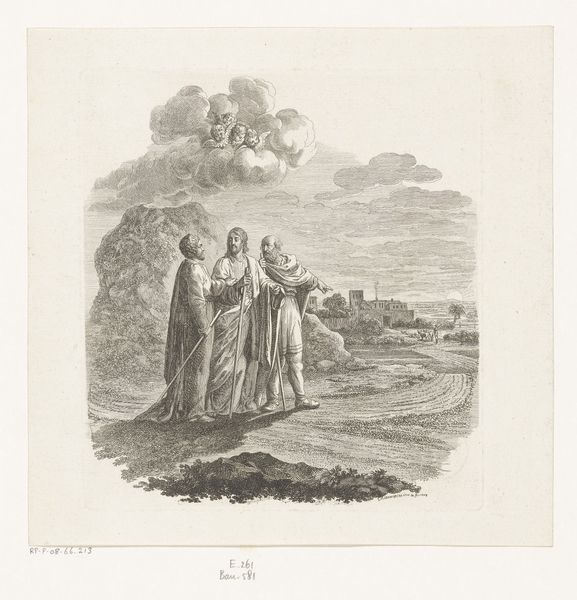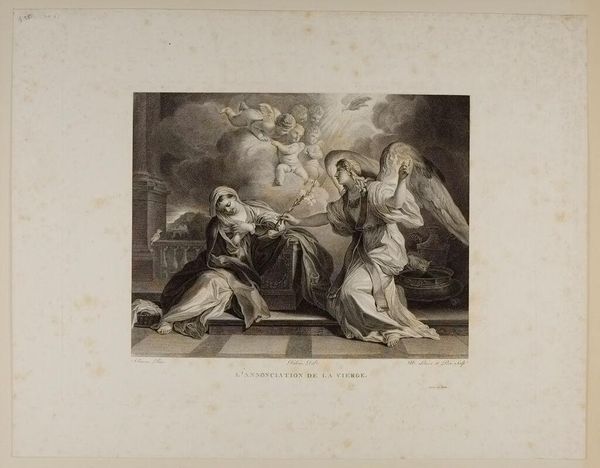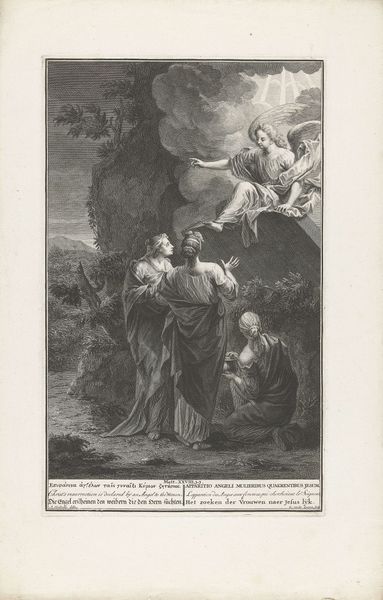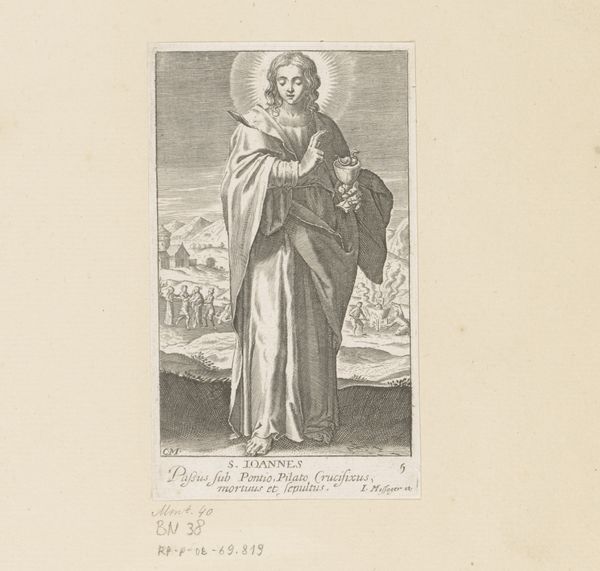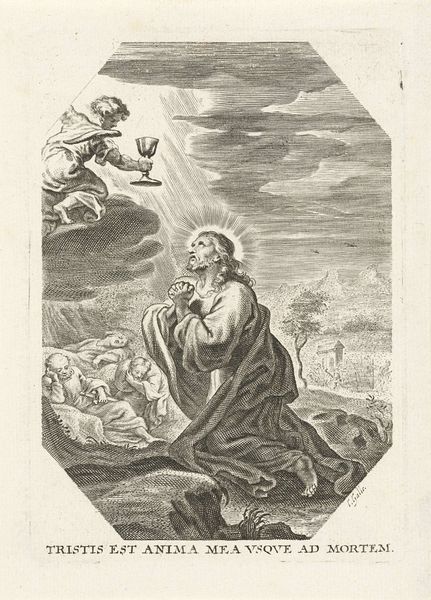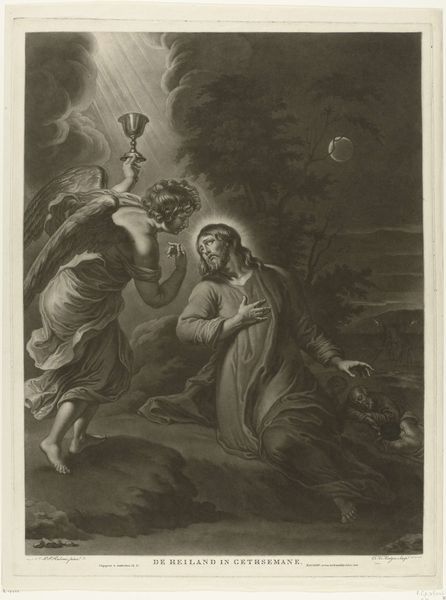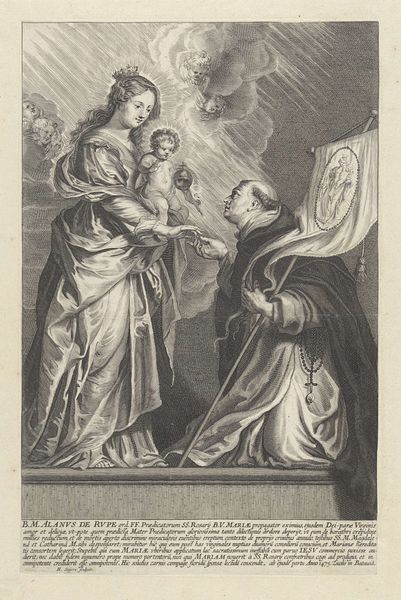
print, engraving
#
imaginative character sketch
#
baroque
# print
#
old engraving style
#
caricature
#
group-portraits
#
engraving
Dimensions: height 336 mm, width 401 mm
Copyright: Rijks Museum: Open Domain
Curator: This engraving, attributed to Jan Punt, likely created between 1721 and 1779, is entitled "H. Anna en Maria in de wolken" or Saint Anne and Mary in the clouds. Editor: The first thing that strikes me is the graphic contrast. It is baroque but almost feels modern. The swirling cloud textures offset by the clean, stark lines defining the figures. Curator: Considering the printmaking boom of the Baroque period, especially in the Netherlands, the availability of religious iconography increased for a burgeoning middle class. This print is exemplary of the pious artwork one might find in a modest home during the period. Editor: The composition draws the eye immediately to Saint Anne; her placement and size give her incredible presence, while Mary seems to lean in towards her, nestled beside her like a child seeking comfort. Curator: It’s a tender image. Depictions like this reinforced the importance of family and religious devotion. The artists and the patrons often had shared religious values, creating an image designed to support the existing societal structure. Editor: There's almost a sculptural quality to their draped clothing. Look how the folds of their garments both reveal and conceal, creating volume and shadow, emphasizing the gravity of their ethereal perch. It is worth noticing that even if the figures’ pose conveys an intended connection between the two subjects, we may appreciate each individual aspect of each one: the different garments and faces expression give an alternate dimension in considering this group. Curator: And these were created to disseminate religious beliefs. Prints, like this engraving, made art accessible, enabling wider participation in social messaging, therefore these representations helped establish and promote devotion for ordinary individuals. Editor: Examining the work through its formal qualities reveals an almost philosophical dialogue between presence and absence, substance and ether. The engraving encapsulates both the tangibility of faith, represented through detailed form, and the ephemeral nature of spiritual transcendence. Curator: It certainly demonstrates the cultural currency of religious imagery and its potential as a tool for solidifying societal values and family norms in 18th-century Dutch society. Editor: Agreed. Ultimately, it leaves you contemplating the profound relationship between the material and immaterial, the seen and unseen.
Comments
No comments
Be the first to comment and join the conversation on the ultimate creative platform.
